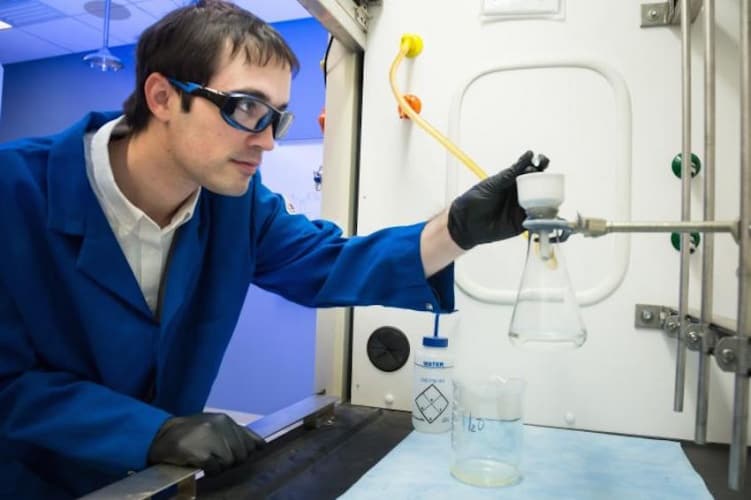
The team from the US Department of Energy’s Oak Ridge National Laboratory (ORNL) was initially studying methods to remove environmental contaminants such as sulphate, chromate or phosphate from water. To remove those negatively charged ions, the researchers synthesised a compound - guanidine - to bind strongly to the contaminants and form insoluble crystals that are easily separated from water.
In the process, they are said to have discovered a method to capture and release carbon dioxide that requires minimal energy and chemical input. Their results are published in Angewandte Chemie International Edition.
“When we left an aqueous solution of the guanidine open to air, beautiful prism-like crystals started to form,” ORNL’s Radu Custelcean said in a statement. “After analysing their structure by X-ray diffraction, we were surprised to find the crystals contained carbonate, which forms when carbon dioxide from air reacts with water.”
Decades of research has led to the development of carbon capture and long-term storage strategies to lessen the output or remove power plants’ emissions of carbon dioxide. Carbon capture and storage strategies comprise an integrated system of technologies that collect carbon dioxide from the point of release or directly from the air, then transport and store it at designated locations.
A less traditional method that absorbs carbon dioxide already present in the atmosphere - direct air capture - is the focus of ORNL’s research, although it could also be used at the point where carbon dioxide is emitted.
Once carbon dioxide is captured, it needs to be released from the compound so the gas can be transported, usually through a pipeline, and injected deep underground for storage. Traditional direct air capture materials must be heated up to 900 degrees Celsius to release the gas, a process that often emits more carbon dioxide than initially removed. The ORNL-developed guanidine material is claimed to offer a less energy-intensive alternative.
“Through our process, we were able to release the bound carbon dioxide by heating the crystals at 80-120 degrees Celsius, which is relatively mild when compared with current methods,” Custelcean said. After heating, the crystals reverted to the original guanidine material. The recovered compound was recycled through three consecutive carbon capture and release cycles.
While the direct air capture method is gaining traction, according to Custelcean, the process needs to be further developed and aggressively implemented to be effective in combatting global warming. Also, they need to gain a better understanding of the guanidine material and how it could benefit existing and future carbon capture and storage applications.
The research team is now studying the material’s crystalline structure and properties with neutron scattering capabilities at ORNL’s Spallation Neutron Source (SNS). By analysing carbonate binding in the crystals, they hope to better understand the molecular mechanism of carbon dioxide capture and release, and help design the next generation of sorbents.

Collaboration to address viable solutions for VAWG database
<blockquote>address the lack of standardisation, coordination, and collaboration of gender disaggregated data intelligence across various regions,...